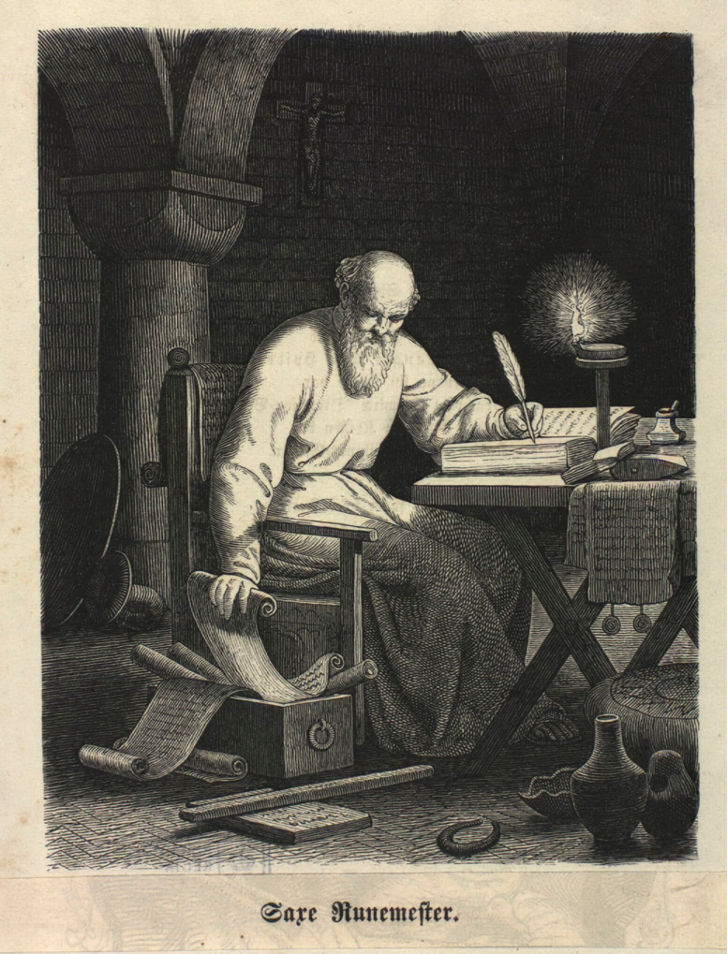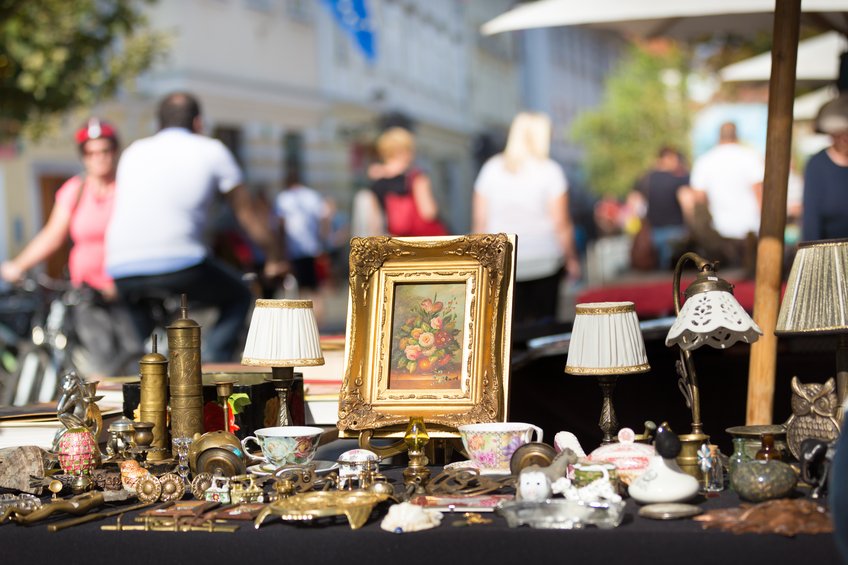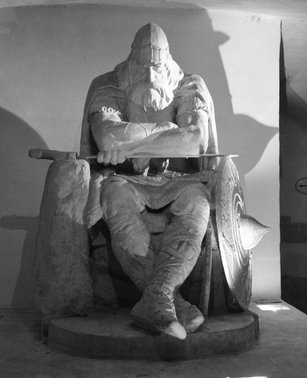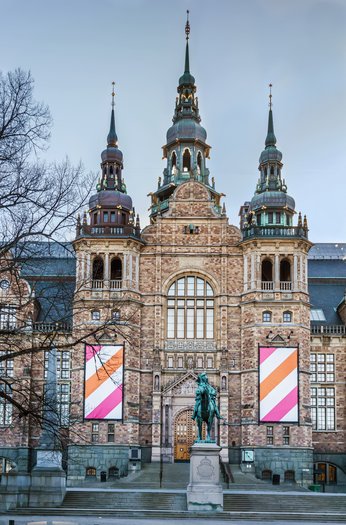Uses of Nordic history
The 'use of history' is the term used to denote a combination of selecting, emphasising and overlooking people, events and epochs taken from history. These aspects are to be found in the pool of historical knowledge that we share and are usually identified with the intention of promoting certain interests. In the Nordics, as elsewhere, these interests are usually either to do with politics, providing information or entertainment, or have something to do with identity.

The term ‘use of history’ does not only cover what researchers and professional historians do, but it also covers the communication of history in a broader sense, as well as even an individual’s relationship with history. History is not only used in teaching and in the dissemination of history, but it can also be found in our everyday lives – often going unnoticed. That said, the use of history does typically not happen arbitrarily, but is based on a certain understanding of the course of history as a whole.
If history is everything that has ever happened in the past, it should include the leaf that fell to the ground one autumn afternoon at Olavinlinna Castle in Finland in 1528, and the smile a young woman sent her husband at a farm in Söderköping in Sweden a spring day in April 1703. The problem with these types of events is that, even though they have probably happened and are thus a part of our shared history, they have left no traces. They are history but nothing else. The parts of history that have left traces in the form of writing or pictures, artefacts, or in how the landscape is formed etc. can be termed historical culture. From this, it is possible to emphasise and/or omit things things based on, for example, political, moral, informative, or existentialist interests. These are the uses of history.
The use of history begins when certain groups on certain occasions and at certain times make use of historical culture to create a particular historical consciousness. In that sense, the use of history is synonymous with the selective use of what could be termed our unsystematised historical culture, with a view to creating order, a particular interpretation, legitimacy or ways of constructing identity. An example of this is when a particular group of people wishes to write a long and glorious history of their nation – or when they invoke a narrative of a magnificent and heroic battle to become an independent nation. Generally, the emphasis and omission that are integral to a particular use of history will be bound up with a particular consciousness of it, which may in turn be influenced by previous uses of history.
| 'Historical culture' is the collective historical memory that a society holds in order to understand its own past in relation to the present. This shared memory cannot of course hold everything that ever happened, but it is possible to say that there is a tacit narrative of a society's history which is typically more or less agreed upon. |
Older uses of history
It is not only in modern times that people have been conscious of the use of history, but also at older points in time, as the following examples show:

- In the 12th century, the historian Saxo did a great deal of work in order to trace the connection between the king and his people, instead of accepting the dominant ideology of the time which had it that the king's power as derived directly from God. He published his work Gesta Danorum (The Chronicle of Denmark) in Latin, covering Danish (and to some degree, more general Scandinavian history) from an assortment of legendary prehistoric kings to the late 12th century.
- The Icelandic sagas were written around 1200-1350, but were about the earlier period of about 850-1030. During the difficult Sturlunga era in the 13th century when society was severely threatened in Iceland, the saga writers resorted to the so-called ‘saga period’ from centuries earlier to gather material in order to understand the threats to society in their own time and to present models of conflict resolution.
- In 1575, Saxo’s Gesta Danorum was translated into Danish in a particular style which was dictatorial in a moral and religious way. It made (new) use of a text which was already an example of the use of history itself. Subsequently, around 1600, Chancellor Arild Huitfeldt published a supplement to Saxo’s Chronicle of Denmark, which covered the period up to Christian III's death in 1559.
PICTURE: Portrait of the Danish historian Saxo, ca. 1150-1250. Saxo wrote a famous chronicle of Danish (and more broadly Scandinavian) history commissioned by the king's best friend and ally, archbishop Absalon. The Royal Danish Library.
- The 18th and 19th centuries again saw diligent users of history in Denmark, as elsewhere, as authors and historians related history selectively in their works. For example, Ove Malling's work Store og gode Handlinger af Danske, Norske og Holstenere from 1777 (Great and good acts of the Danes, Norwegians and Holsteiners) and A.D. Jørgensen's 40 Fortællinger af Fædrelandets Historie from 1882 (40 Tales of the History of the Fatherland) both had a didactic aim in their use of history. Similarly, C.F. Allen’s writing in the 1840s, such as, Haandbog i Fædrelandets Historie (Handbook in the History of the Fatherland) was largely coloured by his political commitment to national liberalism. These Danish examples echo the nationalistic wave that went through not only Denmark and the other Nordic countries, but all of Europe, during this time.
From the 18th century onwards, history was no longer presented as a series of examples which one could learn from, for better or for worse. It lost its value as some sort of exemplary narrative and guiding light on how to live your life, and increasingly emerged as a force in itself; it was no longer a teacher, but an object of interpretation that could be disputed. There was a widespread perception throughout the 18th century that a person could not only create his or her own history as a means of determining their own future, but history could also be created retrospectively by choosing between countless possibilities – from which a number of causal connections and lines of historical development could then be mapped out.
Users of history
History is not only used by historians, but also politicians, journalists, consumers of TV programmes, visitors to museums, undertakers, film producers, writers, etc etc. Most remarkable, perhaps, is the political use of history when politicians exploit it in order to either promote their own interests or to justify their political stance.
Journalists write about history more and more as they have an eye for a good narrative, and these can be found not least in biographies. The same applies to producers of films and TV-series, and in recent years, the large number of on-screen successes can testify to the enormous amount of interest there is in a thrilling plot and dramatic staging. Examples include the Danish productions En Kongelig Affære (A Royal Affair) and 1864, as well as the Swedish production Vår tid är nu (Our Time is Now) and Norwegian Kongens Nei (The King's Choice). (Read more on nordics.info about 1864 by clicking here or watch a trailer of A Royal Affair).
Many narratives of particularly great men and women have become popular in recent years. They appear to cater for the audience’s demand for acquiring knowledge and for entertainment. Historians alone often find it hard to meet this thirst for historical narratives, creating an opportunity for other chroniclers of history. It is an interesting question whether academic historians and their books on the one hand, and journalists and other ways of disseminating history including TV and the internet on the other, are actually opposed to one another – or whether they simply complement each other. The use of history can be seen as becoming more and more intangible due to the increase in different forms of media used to communicate it and its greater accessibility. So, it is of note that, at the same time, people's desire to find out what the 'facts' of history really are has likewise increased; they want something tangible to relate to. This is exemplified in the form of museums with 'hands on', interactive exhibitions and city walks "in the footsteps of…" etc.
PICTURE: The events immediately after the German invasion of Norway in 1940 told from the perspective of King Haakon VII and the Norwegian Royal Family are portrayed in the 2016 film 'The King's Choice'. Photo: Wikimedia, Fair use.
The everyday use of history
Using history in a conscious way is one thing. It is a completely different thing when its use goes unnoticed. We all make use of history in our everyday lives without thinking about it. This occurs not only in our habits, traditions and customs, but our language and gestures are also soaked in a kind of history that we use without being conscious of it.
The same applies when we go about our daily lives in the public sphere, in the city as in the countryside, and we barely register that we are associating with history; it shows itself in the layout of the streets, the architectural design of the facades of buildings, and how roads criss-cross cultural landscapes – all of which are products of history in one way or another. The same applies to how we decorate and furnish the various areas we have for different activities in our homes; something to which most of us never even give a second thought. Even here, we are making use of history in that we unknowingly associate with cultural traits created by the history that surrounds us.

PICTURE: History is found in many everyday objects, not least at flea markets and antique fairs. It has become increasingly popular to rummage for retro knick-knacks and a good offer, and flea markets can be found everywhere from big cities to private garages. Photo: Colourbox.
We rarely stop to consider the history told by coins, stamps, and bank notes, or the history found in our children’s picture books, for example. There is an abundance of history told by objects to be found in our attics or at a flea market, only we often consider them to be rather strange or retro.
Political use and misuse of history
The twisting of history for particular purposes often comes under the broad subject of 'the political use of history' - if not the outright conscious misuse of history.
Here are a couple of Danish examples:
- The most widely discussed example in our time must be former prime minister Anders Fogh Rasmussen’s critique of Denmark’s coalition policy during the Second World War as a means to legitimise the Danish participation in the second Iraq war. This use of history was criticised when it was highlighted that Fogh Rasmussen’s own party, Venstre (The Liberal Party), was not particularly well represented in the resistance during the Second World War.
- In the mid-1800s, Eckersberg was commissioned by Christian VIII to create two paintings of the people giving thanks to the king when he abolished a particular type of bonded working arrangement in Denmark in 1788 (Stavnsbåndsløsningen). This is an obvious example of the patriotic popularisation of the monarchy. However, Eckersberg cheated a little as the paintings show a monument, the Liberty Memorial, which was not in fact erected until 1792-97.
History and memory
The use of history is about remembering. Although nobody truly decides what they remember, there are places and localities that may help you to recollect something you had otherwise forgotten. Remembering and forgetting is about someone’s personal life story as well as the “grand” overall history – and the merging of the two.
Memory and the science of history make an odd couple, and personal memories are typically not the most reliable source when it comes to narrating history. Memory can be said to be a matter of life in all its amassed diversity. History, on the other hand, has a different purpose and answers to different rules regarding analysis, evaluation, critique and an overview of events in relation to time and reason.
The memory stores parts of what one has experienced; the parts that are not either forgotten or repressed. But even when we do remember and do not need to repress anything, memory is historically speaking an unreliable source. It takes the form of an unsorted hodgepodge of remembrances where the single parts are in a mess with no system or order. You can also think you remember something which has never actually happened, and even when memories are correct, they are remembered without any plan or yardstick. Whereas history – at least in its scientific form – is told with a purpose and a specified issue, whereas memory has no organising principle.
While history is characterised by the selection and reflected utilisation of the material remaining from historical culture in its entirety, memory is not. Memory is an unsystematic mix of big and small recollections, some of which are forgotten and/or repressed.

PICTURE: The story of Holger Danske, the sleeping warrior who will awake to defend Denmark if necessary, was originally French. The 1800s saw romanticism and nationalism use Holger Danske in literature (not least H.C.Andersen's tale from 1845) and the Second World War saw one of the largest resistance groups call itself 'Holger Danske'. What was originally a French myth has been used throughout history to become a meaningful national symbol which is still commonly known today. Photo: the plaster version of Holger Danske that sits in the cellars of Helsingør castle. Colourbox.
Cultural heritage as a use of history
The term 'cultural heritage' is often used today and seems like a phenomenon created by a desire to raise awareness of a particular nation’s or group’s shared history. The idea of cultural heritage is almost always accompanied by a wish to bring out certain parts of history in the form of particularly memorable people, buildings, events, literary works, etc. This canonisation is a clear example of selection, emphasis - and omission - of certain parts of history.
When speaking of cultural heritage, it is important to keep in mind who made these selections, at what time and for what purpose they were made. The reason for this is that the use of history is in no way a neutral act, but will always be marked by a consideration of certain interests and a certain purpose.
Likewise, it is worth considering the question of representativeness. Is it the whole world's, Europe's, the nation's or a region's interest and history that is being covered? Or of a certain group or entity? If so, which group(s) are not represented? With what consequences?
Selecting parts of history
One of the most important features of using history is to select and emphasise certain things over others. This can be done to save space in a schoolbook, for example, but it can also be rooted in certain pedagogical or political considerations where things are given a higher or lower priority to cultivate certain interests.
When making a selection from overall historical culture, three steps are taken:
- The first step will typically be to decide on a general focus. This can be in regard to, for example, the construction of the nation state, the class struggle, the history of the working class, the development of religion or economy, or the history of a particular political party. This step can be described as setting a particular agenda.
- Then follows a narrowing of that focus even further – with regard to, for example, the monarchy, the labour movement, or monetary policy.
- The third level is typically characterised by a stereotyping and simplification of the chosen subject, which allows for a kind of representative validity; the stereotype ends up acting as a common denominator, often signified by a person or a specific location.
These three levels are connected and interdependent. For example, often the most important thing in the perception of the class struggle is who stereotypically gets to represent it. From a Danish perspective, it is significant whether you consider Thorvald Stauning and Poul Nyrup Rasmussen the great working-class leaders, or Louis Pio and Jens Otto Kragh. While the first two were result-oriented, practical politicians who found political power important in itself, the last two saw their leadership as a means of realising more overriding, visionary goals. Similarly, a choice between social democratic and communist leaders would also have an impact on the view of class struggle and the labour movement.
The use of history in relation to other disciplines
The use of history and the research connected to it is somewhat different from its neighbouring disciplines, historiography and museology. In contrast to historiography, which is the discipline of analysing what historians have written throughout history, the use of history is not only about scholarly historical texts, but is also about other users of history in a wider context. Similarly, the use of history differs from museology by not primarily working with how exhibitions and presentations can promote general education and knowledge, but by working with e.g. a more direct political, moral, or existential purpose. On the other hand, the three disciplines all have in common that they are concerned with current issues that are examined through material belonging in the past.
As for research into the use of history, this entails less focus on what history actually is and how it happened, and more focus on how it is used than the other two fields of research. This means that the question of function, purpose, and meaning matters much more in this discipline, which perhaps brings the use of history closer to the cultural sciences.

PICTURE: National and regional historical narratives interweave to give an impression of Nordicness at the Nordic Museum in Stockholm. Photo: colourbox.
This article was translated from Danish and shortened and adapted by the nordics.info team after the original author had passed away. Kind permission was given to translate it by danmarkshistorien.dk. Read the longer article in Danish on danmarkshistorien.dk.
Further reading:
- Bernard Eric Jensen, Carsten Tage; Torben Weinreich, Torben (eds.) Erindringens og glemslens politik [The Policy of Memory and Oblivion] (1996).
- John R. Gillis, ed. Commemorations. The Politics of National Identity (1994).
- Niels Kayser Nielsen, Historiens forvandlinger - historiebrug fra monumenter til oplevelsesøkonomi History's Transformations - The Use of History from Monuments to Experience Economics (2010).
- Paul Connerton, How societies remember (1996).
- Peter Aronsson, Historiebruk – att använda det förflutna [Using the Past] (2004).